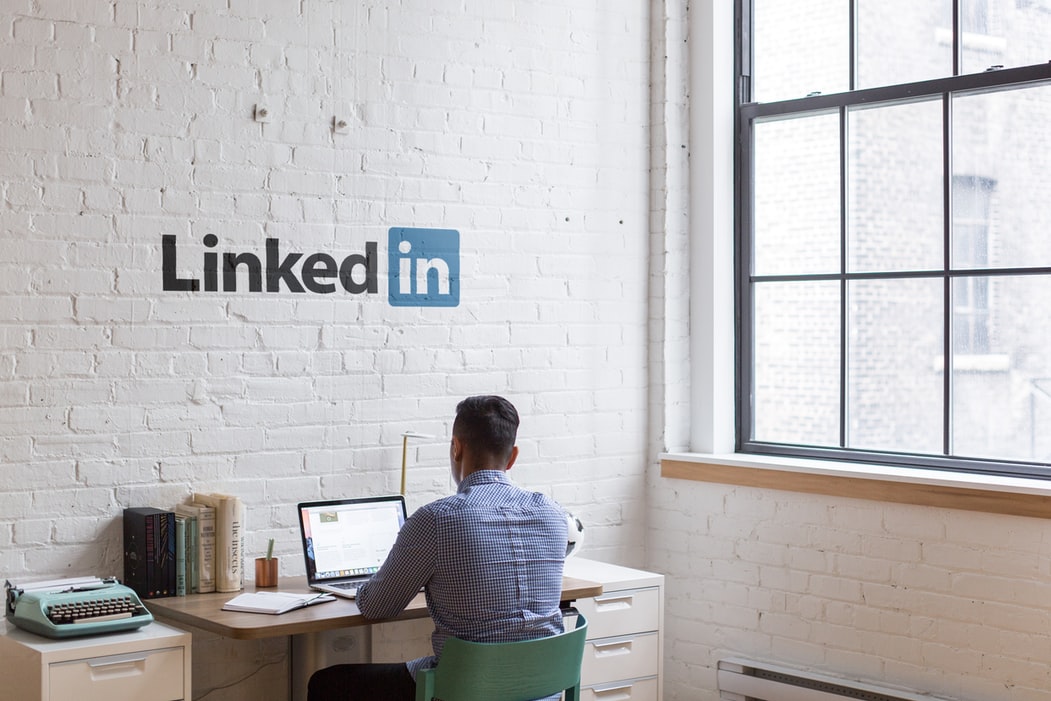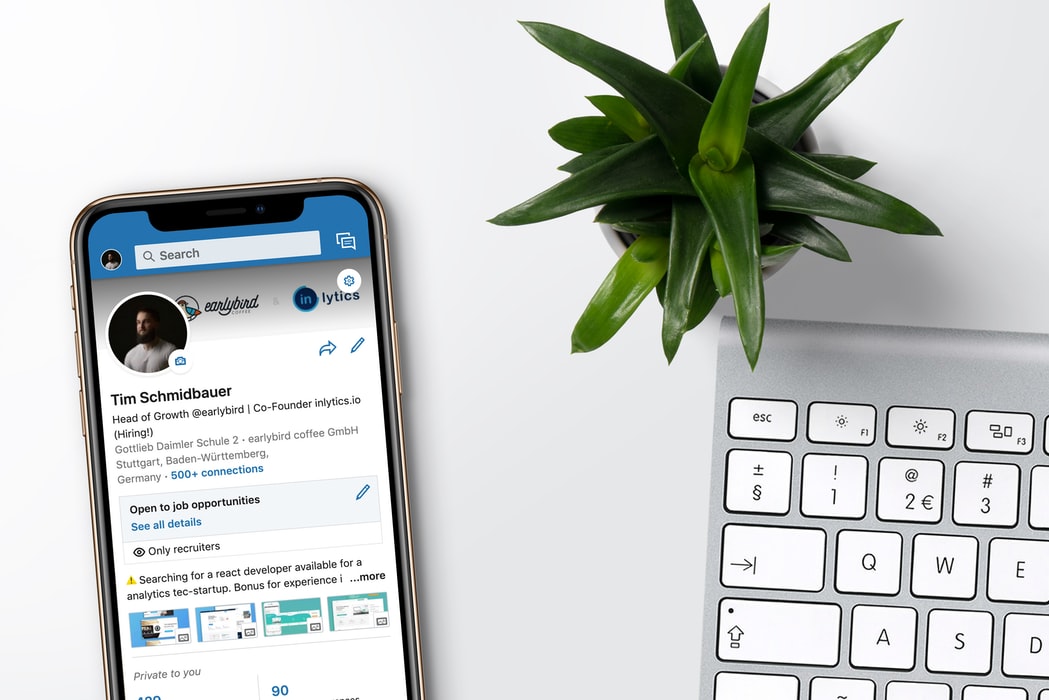Human Resources

11 Quick Ways to Improve Your LinkedIn as an HR Professional

09 February 2021 - 3 min read
Whether you’re only just starting out in the people profession or you’re already an accomplished HR executive, these days, having an active online presence is a big part of staying relevant in the ever-evolving world of HR.
LinkedIn, especially, is considered an insanely effective networking tool, but amongst over a whopping 700 million users, it can be hard to stand out from the crowd.
That’s why we’ve compiled 11 quick ways to improve your LinkedIn profile as an HR professional to help you out and keep you connected.

1. Make your profile public
Online visibility is important if you want to remain open to potential career opportunities, and the first step to letting people (especially recruiters!) know that you welcome those exciting conversations is by setting your LinkedIn profile up to be public. This will also help you appear more frequently in LinkedIn searches.
Updating your current location will assist with this too being that it helps improve search accuracy - and even lets your extended network know if you live in their city, making them more inclined to invite you to relevant in-person and virtual events.
Quick tip: Also make your contact details public (if you’re comfortable!) LinkedIn InMail is only available to Premium users, so posting this information will allow for even more networking opportunities.
2. Have a professional profile photo
A picture really is worth a thousand words - and if your LinkedIn profile photo is one that’s, say, an overexposed shot of you on a night out, chances are you’re not going to get much positive attention from the HR industry (or any other).
The same goes for a profile photo of you and your friends, you and your (adorable) dog, or an outdated selfie from over 10 years ago. While there’s nothing wrong with these kinds of pictures, they have a place on social media - and it’s not typically on the LinkedIn platform.
That’s why having a professional headshot - or your best DIY version of one - is your best bet for improving your profile as an HR executive.
Remember you’re trying to grow a professional network, not a group of followers as you would on Twitter or Instagram - meaning your headshot should be a reflection of your role and level of professionalism.

3. Include a banner image and other media
While your profile photo is the most important image to add to your LinkedIn profile, we also recommend including a banner image too. It draws attention to your profile and gives people further insight into what type of company you work for, if not the company itself.
If you don’t have a company banner to use or a Marketing team to create one, you can also use or design free industry-related stock images from websites like Canva or Unsplash.
If you want to go a step further, you can also add any HR-related collateral you’ve produced or have on hand for your business. This could be in the form of new and innovative company strategies or policies implemented during the pandemic or even brand-related content (i.e. white papers, case studies, or videos) that showcase why your company is so great to work for.
This will not only add an extra dimension to your profile but also demonstrate your commitment and enthusiasm to your role within the company.
4. Improve your headline
Your headline is a key element to your LinkedIn profile, and being that there are so many facets to HR (i.e. generalist and specialist roles), it’s important to create an engaging headline that explains who you are, what you do, and how you benefit others. The catch is, however, you need to do this in 120 characters or less.
Here are a few tips that LinkedIn recommends to keep things clean:
- Use keywords others might use when searching LinkedIn
- Avoid using all capital letters (this is more popular than you’d think)
- Use vertical bars (|), commas, or dashes to separate phrases
- Avoid using unnecessary symbols or ‘etc.’
A few examples of effective headlines include:
- ‘Global HR Leader | Talent Manager | Team Builder’
- ‘Head of Talent Acquisition at [insert company] - looking to hire HR manager!’
- ‘An HRM who works with organisations that want their HR teams to be more strategic, productive, and proactive.’
You can update and improve your headline as things change at work and in your career, just remember to keep it appealing and to the point.

5. Make good use of the summary space
Near the top of your profile, LinkedIn gives you the chance to elaborate on your headline and tell people a little bit more about yourself in no more than 2000 words. This is a great place to expand on your experiences, your goals, and your accomplishments.
If you’re stuck on how to outline your summary, however, here are a few quick tips for inspiration:
- Describe what drives you and why you love the HR before you go into your background and aspirations
- Include HR keywords and add them in where applicable (i.e. recruitment, retention, employee communications)
- Keep your writing style casual and personal to show how you would speak to your colleagues
Don’t be afraid to show people who you are and demonstrate a little humour and charisma in the process!
6. Add a company description
Your LinkedIn profile is essentially an online version of your CV, and while it’s great to outline your responsibilities in bullet form (including specific metrics and achieved results), what you may also want to include is a company overview.
As someone working in HR, people want to come to your profile and gain a better understanding of what you do, and that means understanding what your company does too.
Let your profile viewers know:
- Who the company is and what they do
- How long the company has been around
- What their company mission is, and
- Note any outstanding business achievements (i.e. any awards or industry-leading accolades)

7. Create a custom URL
Creating a custom URL is both simple and useful for HR professionals because it makes it easy to send people directly to your profile and not the profile of one of the other hundred people who may also share your name. Plus, it’s an all-around classier alternative to John1271567, wouldn’t you say?
You can check out how to customise your LinkedIn URL here.
We recommend using your first and last name, if it’s available. However, if that URL is already taken, try incorporating your middle name in there too. Once you’ve done this, you can also change your other social accounts and emails to the same so your name is consistent across all platforms, creating a stronger personal brand.
8. Join online HR communities
If you’re currently active on LinkedIn, you already know that there are an abundance of opportunities to comment and share HR-related content with your online network. However, there are also tons of LinkedIn HR communities, like HR Voices with ICS Learn, that you can join to stay informed and on top of industry trends while participating in energising discussions among like-minded people professionals.
Actively engaging in LinkedIn HR and people management communities will give you access to diverse opinions and outlooks from people on a global scale, expanding your network and keeping you privy to what’s going on in the industry and all over the world.

9. Request recommendations
While endorsements give those viewing your profile a good idea of what your peers value about you, recommendations take things to another level.
These personal testimonials illustrate the experience of someone who has worked with you, offering your network, employers, and recruiters a first-hand point of view of what to expect from you as a working professional.
This is why we strongly suggest reaching out to specific contacts you’d be proud to hear from and request these recommendations (ideally at least one per role), as they add a personal touch to your profile you wouldn’t otherwise get. Not to mention, it shows that people appreciate you when they take the time to write you one.
10. Grow your network with care
We’ve all seen it too many times before - the notification that someone would like to connect on LinkedIn along with the generic message that says something along the lines of, “I’d like to add you to my network”. While we’re always happy to accept, it’s important to step up your game to improve your own profile.
Instead of sending an autogenerated message, personalise your message. If you’re adding a new colleague to your LinkedIn, for example, you can say something along these lines:
“Hi [insert name], welcome to the team! I look forward to working with you and getting to know more about you over the coming months.”
Fast, to the point, and effective.

11. List your qualifications - even if they’re still in progress
Showcasing your relevant HR qualifications is another great way to improve your LinkedIn profile if you’re an aspiring or current HR professional.
Even if your qualification is still in progress, there’s no need to wait until you’ve completed it to add it to your LinkedIn, especially since undertaking the relevant education and training shows your dedication and commitment to HR.
If you’ve been studying an online CIPD qualification with us, for example, simply putting ‘Studying towards CIPD’ on your profile will boost your LinkedIn and help attract employers.
Download Your Free CIPD Course Guide
Get information on our CIPD courses
Share this post
We hope these 11 ways to improve your LinkedIn profile will prove useful in helping you build a strong personal brand and enhancing your credibility as an HR professional.
Gook luck!
To learn more about developing your HR career, speak to one of our friendly Course Advisors today about our 100% online CIPD courses.












